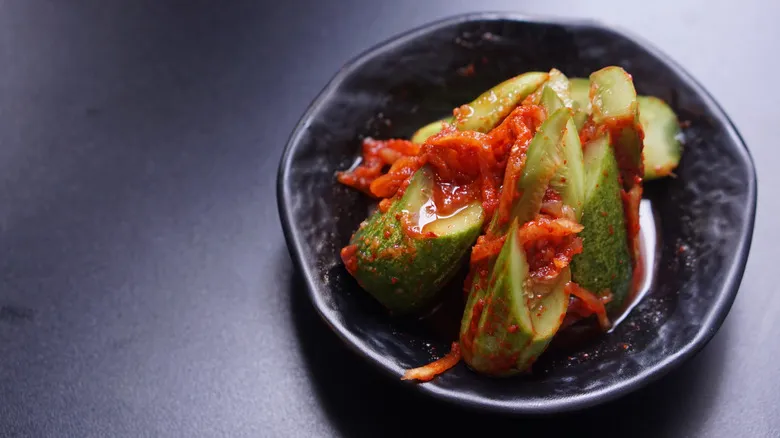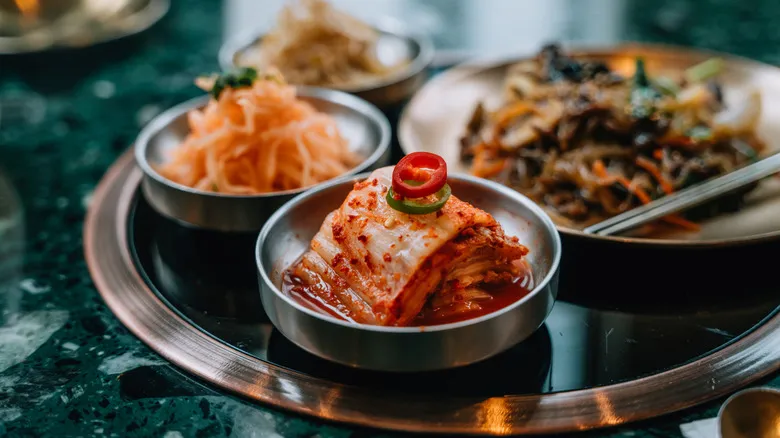How to try these unique kimchi varieties for yourself

If you’d rather leave the preparation of specialty kimchi to the experts, consider visiting local Korean restaurants—be sure to check out the banchan, or side dishes—or Asian grocery stores like H Mart for pre-made options. However, if you’re eager to create your own unique kimchi at home, Sungchul Shim notes that the three types he mentioned "typically require less time and effort [to prepare] than tongbaechu." For optimal results, Shim advises home cooks to "always use fresh, high-quality ingredients to enhance their flavors."
Kkaennip kimchi is crafted using perilla leaves, which impart a fragrant, minty taste. It’s quick to prepare since the kimchi paste does most of the work in "fermenting" the leaves—all you need to do is spread the paste (which likely includes ingredients such as fish sauce, sugar, and gochugaru) over the leaves and seal them in an airtight container for a few hours at room temperature before they’re ready to enjoy.
Oi Sobagi is also quick to make, as it involves dry pickling the cucumbers with salt before stuffing them with vegetables and kimchi seasoning. It can be served right away or left to ferment before being refrigerated. In contrast, chonggak kimchi requires a bit more time to ferment the salted radishes in a kimchi paste made with glutinous rice porridge. However, after a couple of days of fermentation, this kimchi can be savored for several weeks.
Recommended

Why Tomato Sauce Is Prone To Splattering

Spanish Vs Mexican Chorizo: Is There A Difference?

The Important Thing To Look For When Buying Club Soda

What Exactly Does Goat Milk Taste Like?
Next up

